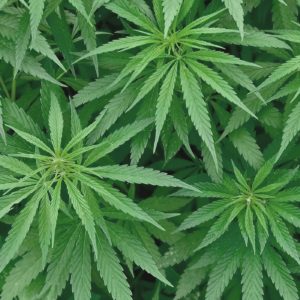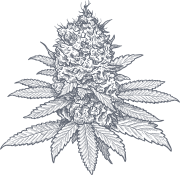
Cannabis Hemp
Cannabis hemp was one of the world’s most dominant agricultural crops for over 1,000 years. It was used in the production of fiber, fabric, lighting oil, paper, incense and medicines. It was also a primary source of food oil and protein for humans and animals.
“The earliest known woven fabric was apparently of hemp, which began to be worked in the eighth millennium (8,000-7,000 B.C.).” (The Columbia History of the World, 1981, page 54.)
The widespread use of cannabis hemp was as a result of its qualities as the strongest, most-durable, longest-lasting natural soft-fiber. Its leaves and flower tops had a well established use in medicine for at least 3,000 years, until the turn of the 20th century.
Botanically, hemp is a member of the most advanced plant family on Earth. It is a dioecious (having male, female and sometimes hermaphroditic, male and female on same plant), woody, herbaceous annual that uses the sun more efficiently than virtually any other plant on our planet, reaching a robust 12 to 20 feet or more in one short growing season. It can be grown in virtually any climate or soil condition on Earth.
Source: Herer, J., & Conrad, C. (1995). The emperor wears no clothes. Van Nuys, CA: HEMP.

Cannabis as Medecine
For more than 3,500 years, cannabis has been one of the most widely used plants for medicines, depending on the culture. This includes: China, India, the Middle and Near East, Africa, and pre-Roman Catholic Europe (prior to 476 A.D.)
Cannabis was America’s number-one analgesic for 60 years before the rediscovery of aspirin around 1900. From 1842 to 1900, cannabis made up half of all medicine sold, with virtually no fear of its high.
From 1850 to 1937, the U. S. Pharmacopoeia listed cannabis as the primary medicine for more than 100 separate illnesses or diseases.
From pre-1000 B.C. to 1940s A.D., researchers, doctors and drug manufacturers (Eli Lilly, Parke-Davis, Squibb, etc.) had no idea what the active ingredients of cannabis were until Dr. Mechoulam discovered THC in 1964.
THC Delta-9 was isolated by Dr. Raphael Mechoulam at the University of Tel Aviv in 1964. His work confirmed that of Professor Taylor of Princeton, who had lead the research and identification of natural THC Delta-9 precursors in the 1930s.
Source: Herer, J., & Conrad, C. (1995). The emperor wears no clothes. Van Nuys, CA: HEMP.
Cannabis in Canada
2001
Marihuana Medical Access Regulations (MMAR)
2013
Marihuana for Medical Purposes Regulations (MMPR)
2016
Access to Cannabis for Medical Purposes Regulations (ACMPR)
2018
Cannabis Act & Cannabis Regulations
The Cannabis Act and the Cannabis Regulations came into force on October 17, 2018 and provides three primary options for medical patients to obtain cannabis:
- continue to access quality-controlled cannabis by registering with License Holders;
- register with Health Canada to produce a limited amount of cannabis for their own medical purposes; or
- designate someone else to produce cannabis for them.
These three options for access to medical cannabis are similar to those options previously allowed under the Access to Cannabis for Medical Purposes Regulations (the “ACMPR”), which was substantively incorporated into the Cannabis Regulations. The new Cannabis Act medical regime improves upon the previous ACMPR requirements by reducing administrative requirements that were identified by patients, patient advocates, and healthcare professionals as being especially burdensome. For example, patients may now request the transfer of their medical document from one License Holder to another without having to request a new medical document from a health care practitioner.
